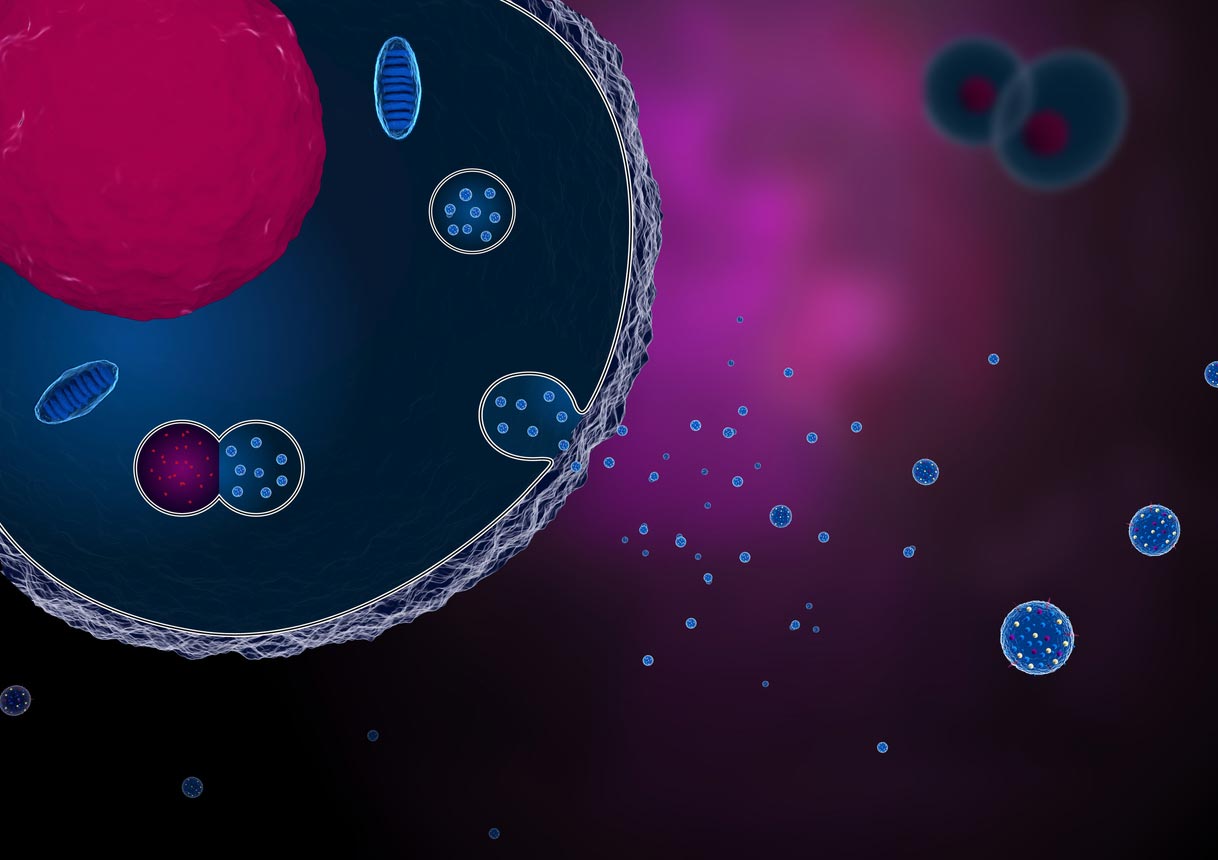 Several times a week, our providers speak to patients who are confused about the difference between stem cells versus exosomes. The R3 Stem Cell Therapy of Beverly Hills, CA, Center of Excellence typically uses them together for regenerative therapies. Here is an explanation that will clarify the differences.
Several times a week, our providers speak to patients who are confused about the difference between stem cells versus exosomes. The R3 Stem Cell Therapy of Beverly Hills, CA, Center of Excellence typically uses them together for regenerative therapies. Here is an explanation that will clarify the differences.
Cells are the structural, functional, and biological units of all living beings. A cell can replicate itself independently. Hence, they are known as the building blocks of life.
Stem cells are actually cells that contain a nucleus, which makes them eukaryotic. They are able to replicate through mitosis, and at some point they will turn into a specialty cell when tissue repair is needed. There are a couple main subtypes of stem cells that define what types of specialty cells they can turn into:
- Pluripotent: Can turn into any cell type in the body
- Multipotent: Can turn into several different cell types, but not all.
R3 Stem Cell’s Centers work with multipotent stem cells, as they have been shown to be safe and effective when produced properly. Treatments at R3’s Centers include anywhere from 10 million stem cells, up to hundreds of millions depending on the patient’s ailments.
Because stem cells are living cells, when they are produced in a laboratory they will need to be stored at a temperature cold enough to keep them viable. This is typically a minimum of -80 degrees Celsius.
The average size of a stem cells is 13 micrometers. This is important, as you will see below when discussing the LARGE difference in size compared with exosomes.
Exosomes, also known as extracellular vesicles, are extremely small particles that are byproducts of cells. They are technically defined as a “secretion”. They may be seen in many different bodily fluids, including the blood stream, lungs, semen, urine, breast milk, saliva and more.
Regenerative therapies utilize exosomes that are derived from stem cells. R3’s therapies use exosomes that are derived from umbilical cord stem cells. So to clarify – exosomes are not cells. They do not have a nucleus, and they are unable to replicate themselves.
They are formed inside a cell, and are similar to a “soap bubble” where the bubble contains many different growth factors, cytokines, mRNA and DNA too. These exosome bubbles are routinely extravasated from cells, and then cells that are “in need” will invaginate them. At that point, the contents of the exosomes are released and begin to perform significant intra-cellular activities.
Exosomes are extremely small, averaging 30 nanometers to 130 nanometers. Considering the average stem cell is 13,000 nanometers, exosomes are approximately 100 times smaller than stem cells!
As stem cell therapies are measured mostly in millions of cells being administered, exosome therapies are typically measured in billions. All too often, patients are surprised when they hear a recommendation of 100 million to 200 million stem cells. They may say “I was offered a billion stem cells by another clinic, why only 100 million?”
In actuality, what they were offered was a billion exosomes, not stem cells. And a billion exosomes is not much at all! Within each milliliter of exosome product, there are approximately 15 billion exosomes. So for most patients, we administer 30 billion to 75 billion exosomes.
R3 Stem Cell often uses umbilical cord stem cells and exosomes together. Why? Because the combination has been shown to be exceptionally beneficial and safe for patients. For each 50 million stem cells administered, R3 provides patients with a vial of exosomes for free.
The point here is for patients to understand that there is an order of magnitude difference between typical stem cell amounts administered in comparison to exosomes. It’s millions versus billions!
R3 has over 45 Centers of Excellence globally and has performed over 22,000 stem cell procedures in the past decade. Free consultations are offered to anyone desiring to see if he/she is a candidate.
Call +1 (844) GET-STEM today!
The average size of a stem cells is 13 micrometers. This is important, as you will see below when discussing the LARGE difference in size compared with exosomes.
Exosomes, also known as extracellular vesicles, are extremely small particles that are byproducts of cells. They are technically defined as a “secretion”. They may be seen in many different bodily fluids, including the blood stream, lungs, semen, urine, breast milk, saliva and more.
Regenerative therapies utilize exosomes that are derived from stem cells. R3’s therapies use exosomes that are derived from umbilical cord stem cells. So to clarify – exosomes are not cells. They do not have a nucleus, and they are unable to replicate themselves.
They are formed inside a cell, and are similar to a “soap bubble” where the bubble contains many different growth factors, cytokines, mRNA and DNA too. These exosome bubbles are routinely extravasated from cells, and then cells that are “in need” will invaginate them. At that point, the contents of the exosomes are released and begin to perform significant intra-cellular activities.

Dr. David Greene
MD, PhD, MBA
Dr. David Greene, MD, PhD, MBA, is a pioneering leader in regenerative medicine and healthcare marketing. As a residency and fellowship-trained orthopedic surgeon, Dr. Greene transitioned from clinical practice to become the founder and CEO of R3 Stem Cell and US Lead Network, where he has revolutionized patient care and medical practice growth through innovative therapies and digital marketing strategies. He has authored two influential books on healthcare internet marketing, ranks among the top expert authors globally, and has been featured on the cover of Corporate Vision magazine for his impact on global regenerative therapies. Beyond his professional achievements, Dr. Greene is passionate about education, compassion, and continuous innovation.

Sorry, the comment form is closed at this time.